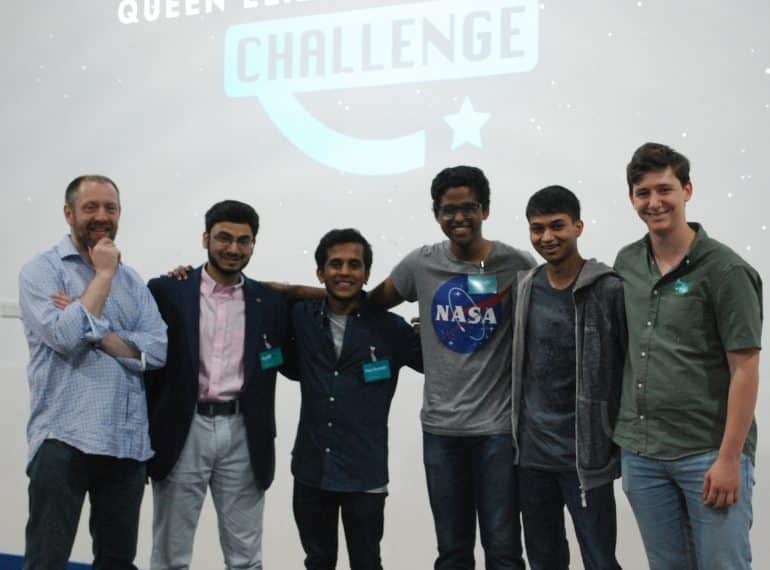
Five veterans of QE’s past national and international successes in space design competitions returned to Barnet to help stage an inter-school Galactic Challenge.
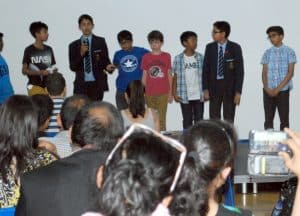 Aadil Kara (OE 2010–2017), who has just completed the second year of a Physics degree at Imperial College, is currently Chair of the Galactic Challenge (GC) – a regional competition for younger pupils and a sister competition to the UK Space Design Competition (UKSDC). In his final year at QE, Aadil progressed from the UKSDC to the International Space Settlement Design Competition, hosted by NASA’s Kennedy Space Center.
Aadil Kara (OE 2010–2017), who has just completed the second year of a Physics degree at Imperial College, is currently Chair of the Galactic Challenge (GC) – a regional competition for younger pupils and a sister competition to the UK Space Design Competition (UKSDC). In his final year at QE, Aadil progressed from the UKSDC to the International Space Settlement Design Competition, hosted by NASA’s Kennedy Space Center.
Aadil, worked with QE’s Head of Physics, Jonathan Brooke, to help the School host a Galactic Challenge for secondary schools in London.
“Old Elizabethans are currently playing a key role in the organisation of both the UKSDC and the GC,” said Mr Brooke. “I’m hugely impressed by their willingness to give up their time to support these competitions which give children from schools across the country experience of working in large teams under a tight deadline – a taste of the challenges associated with professional life that are difficult to replicate in the classroom.”
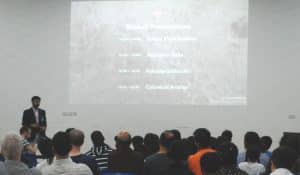 Helping Aadil and Mr Brooke were Aadil’s QE contemporaries and former UKSDC co-competitors, Neelesh Ravichandran, Harikesan Baskaran and Sam Bayney, as well as David Dubinksy, who attended QE from 2012–2016. Neelesh, Harikesan and Sam all served as Coordinators on the day, while David, who, like Aadil, reached the international stages of UKSDC in his year, was the volunteer CEO for one of the competing teams, or ‘companies’.
Helping Aadil and Mr Brooke were Aadil’s QE contemporaries and former UKSDC co-competitors, Neelesh Ravichandran, Harikesan Baskaran and Sam Bayney, as well as David Dubinksy, who attended QE from 2012–2016. Neelesh, Harikesan and Sam all served as Coordinators on the day, while David, who, like Aadil, reached the international stages of UKSDC in his year, was the volunteer CEO for one of the competing teams, or ‘companies’.
The Galactic Challenge is a space industry simulation challenge for students aged 10-14. Children design a settlement in space within just a few hours, competing against other teams, as well as the clock.
At QE, in addition to the School’s own Year 7 company, named Columbus Aviation, there were entries from: Dame Alice Owen’s School; The Charter School, North Dulwich; The Henrietta Barnett School and The Latymer School.
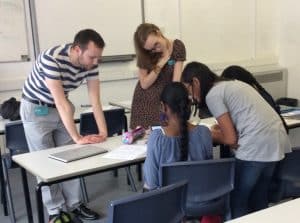 Aadil said: “We run GC competitions throughout the country firstly to stimulate students’ interests in STEM from the early ages of secondary education, and secondly to help them develop ‘soft skills’, including team-working and interpersonal skills. Having first participated in the process in the Sixth Form, it was a pleasure to be able to bring the competition back to the School.”
Aadil said: “We run GC competitions throughout the country firstly to stimulate students’ interests in STEM from the early ages of secondary education, and secondly to help them develop ‘soft skills’, including team-working and interpersonal skills. Having first participated in the process in the Sixth Form, it was a pleasure to be able to bring the competition back to the School.”
The ‘companies’ worked to complete a task set by the fictional Foundation Society. In the morning, they were given a Request for Proposal (RFP) co-written by Aadil that reflects a typical design brief in the space engineering industry; they then spent the day producing designs in response, assisted by a volunteer ‘CEO’ for each company.
The scenario involved them jumping forward to 2069, coinciding with the celebration of the centenary of the Apollo 11 moon landing. Students produced designs for Armstrong, the first holiday resort on the moon, named in honour of Neil Armstrong, famously the first person to step on to its surface in 1969.
The Armstrong resort had to include a commemorative area around the Apollo 11 landing site and to host trips from tourists visiting from other settlements around Earth’s orbit. Competitors also had to find a way to make the lower half of the Apollo 11 Lunar Model (which remains on the moon’s surface) the centrepiece of a tourist attraction, whilst considering how to conserve the site.
The companies’ design proposals considered almost all aspects of the design of a futuristic space settlement, from the activities offered to tourists to the methods of power generation.
At the end of the day, the companies presented their work in ten minutes to an audience of parents, their peers, and a judging panel. In the presentations, students suggested ideas including: settlements made out of recycled materials; rearing rabbits on the moon, and Earthrise viewing platforms, with the home QE team suggesting lunar bungee-jumping. The winning team was a combined company – Astrodyne Delta – drawn from Dame Alice Owen’s School and The Charter School, North Dulwich.
Afterwards, Neelesh, who has come to the end of his second year at Imperial, where he is reading Electrical and Electronic Engineering, said: “Volunteering at UKSDC is a truly rewarding experience. The enthusiasm, curiosity and ingenuity of the participants is awe-inspiring and has served to remind me of why I study engineering. Both these competitions are a test of character and imagination, for volunteers and participants alike.”
Harikesan has finished the second year of a Mechanical Engineering/Computational Engineering and Design at Southampton. He starts a placement with Rolls-Royce Motor Cars this month. “Volunteering at the UKSDC and GC competitions provides an invaluable opportunity to encourage students to see STEM [Science, Technology, Engineering & Mathematics] in its true colours.”
David, who has just finished the third year of an Aeronautical Engineering degree at Durham University, still recalls the inspiration he drew from the UKSDC himself: “Taking part in the competition sparked a strong obsession with space; I was drawn by the utopian, fantastical designs of future space settlements and enjoyed imagining life in such a future. I opened a space society at QE, which some OEs may remember, and attended the annual Student Space Conference in Year 12, a fantastic event organised by the same parent organisation as the Galactic Challenge, the UK Students for the Exploration and Development of Space (UK SEDS). At Durham, I’ve also joined the university’s SEDS branch where we had some great networking with brave local startups and have helped organise trips to the Student Space Conference. My first internship was in a small electronics company, as it was technically in the space sector.”
Although the internship proved to be a disappointing experience, during his time there he was able to re-focus on what he really wanted – “to pursue unprecedented and utopian technology design” – which led him into the field he is currently targeting, namely “minimal-fuel, lighter-than-air travel, in other words engineering modern blimps and airships!” It is, reflects David, “all a long chain of events from saying ‘yes’ to my friend asking me if I wanted to fill an empty space in the first QE UKSDC team, which I turned down at first because I was nervous!”
Sam has finished the second year of a Medicine degree at Southampton. He said: “It’s good to see kids taking an interest in these types of projects at this age – it develops skills they will need to solve the global problems facing us in the near future.”
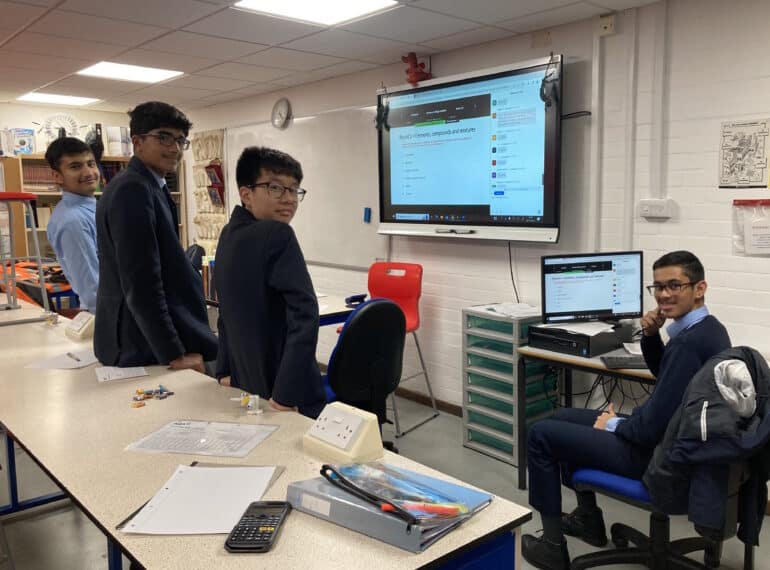
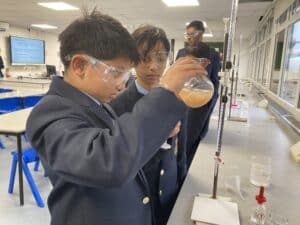 Team 38 (pictured top) scored 66 out of a maximum possible 72 – or 92% – to take first place ahead of St Benedict’s School, on 65 points, in the Chilterns and Middlesex round of the Top of the Bench competition.
Team 38 (pictured top) scored 66 out of a maximum possible 72 – or 92% – to take first place ahead of St Benedict’s School, on 65 points, in the Chilterns and Middlesex round of the Top of the Bench competition.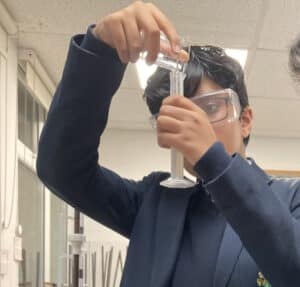 In addition to progressing to the national round of the competition in the spring, they win a silver shield and Amazon vouchers.
In addition to progressing to the national round of the competition in the spring, they win a silver shield and Amazon vouchers.
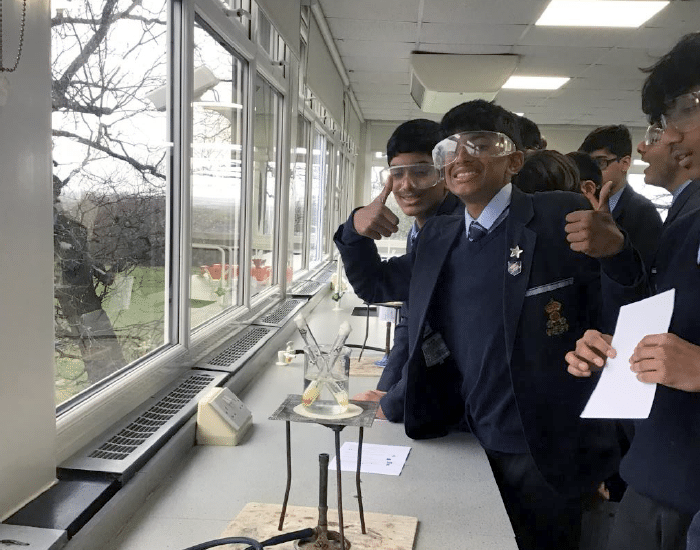
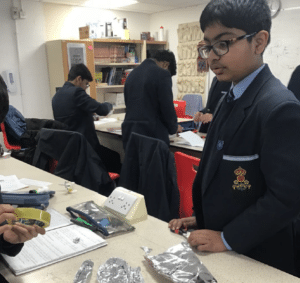 Year 8 boys conducted experiments to explore improvements in shipbuilding during Elizabeth I’s reign, to show how food was preserved in an age before refrigeration and to make their own Tudor-style soap.
Year 8 boys conducted experiments to explore improvements in shipbuilding during Elizabeth I’s reign, to show how food was preserved in an age before refrigeration and to make their own Tudor-style soap.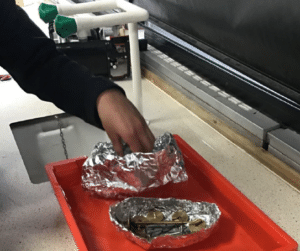 Another hands-on session involved making model boats out of aluminium foil to see which boat shape could hold the most mass. The boys learned that innovations by shipwrights during Elizabeth I’s reign allowed the introduction of ships that were faster, more manoeuvrable and carried heavier guns. The superiority of English ships was an important factor of the defeat of the Spanish Armada invasion fleet in 1588.
Another hands-on session involved making model boats out of aluminium foil to see which boat shape could hold the most mass. The boys learned that innovations by shipwrights during Elizabeth I’s reign allowed the introduction of ships that were faster, more manoeuvrable and carried heavier guns. The superiority of English ships was an important factor of the defeat of the Spanish Armada invasion fleet in 1588.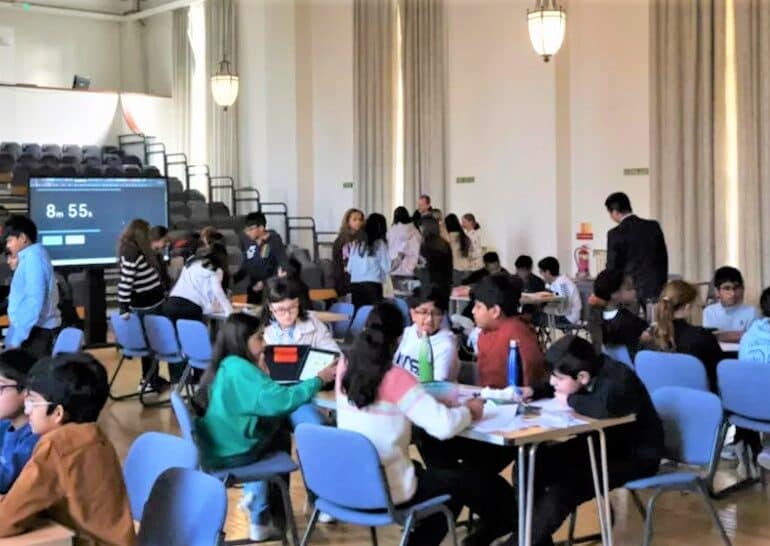
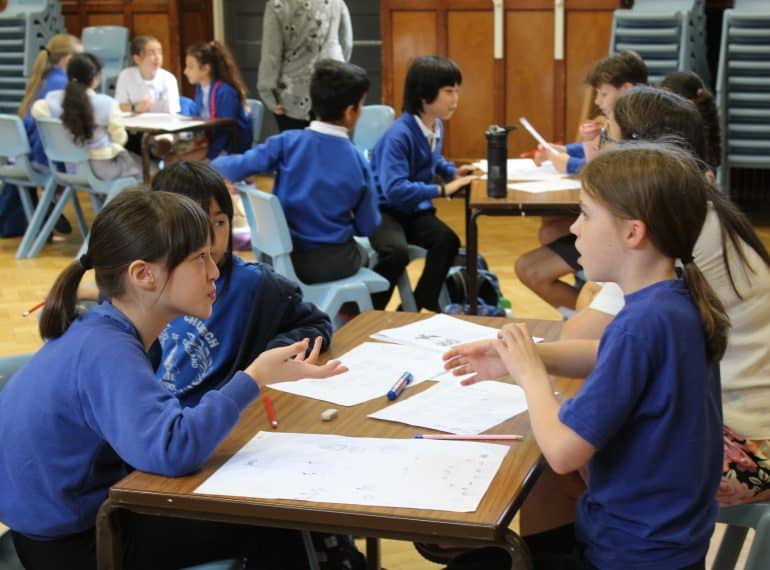
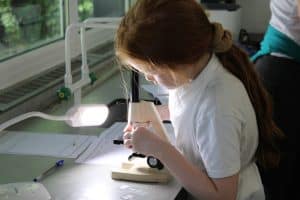 The events, which are part of QE’s partnerships work with the local community, are aimed at giving Year 5 girls and boys an early taste of secondary school education.
The events, which are part of QE’s partnerships work with the local community, are aimed at giving Year 5 girls and boys an early taste of secondary school education.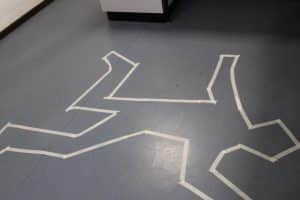 The first of the three days was the ever-popular Primary Forensics Workshop. The visitors were tasked with completing a number of experiments and analyses to work out who had murdered the Headmaster!
The first of the three days was the ever-popular Primary Forensics Workshop. The visitors were tasked with completing a number of experiments and analyses to work out who had murdered the Headmaster!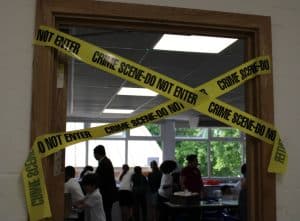 Boys from Year 12 helped staff run this workshop, engaging with the children at each station.
Boys from Year 12 helped staff run this workshop, engaging with the children at each station.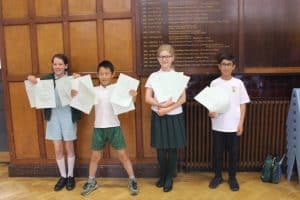 Firstly, teams were given the challenge of designing a castle on paper. They had to base their design on a certain set of criteria and follow a budget, requiring them to decide which features they wanted to prioritise.
Firstly, teams were given the challenge of designing a castle on paper. They had to base their design on a certain set of criteria and follow a budget, requiring them to decide which features they wanted to prioritise.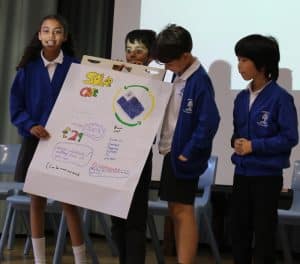 There was then a Sustainability Challenge run jointly by Geography and Economics. The children had to work in groups and devise a sustainable product. They designed their product, chose a logo and decided on their target market. Then each group presented to the other children in attendance. Among the ideas generated were: a mobile phone where the case is a solar panel and charges the phone, and a ‘plastic’ bottle where the bottle itself is biodegradable.
There was then a Sustainability Challenge run jointly by Geography and Economics. The children had to work in groups and devise a sustainable product. They designed their product, chose a logo and decided on their target market. Then each group presented to the other children in attendance. Among the ideas generated were: a mobile phone where the case is a solar panel and charges the phone, and a ‘plastic’ bottle where the bottle itself is biodegradable.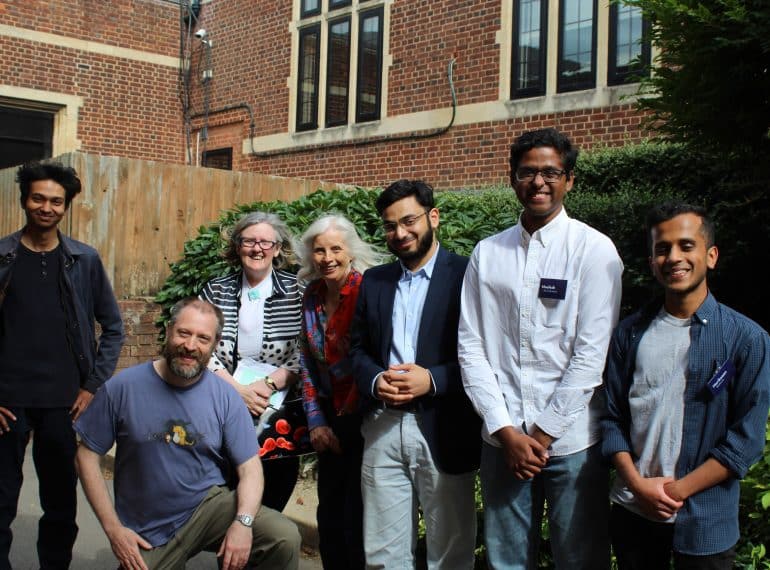
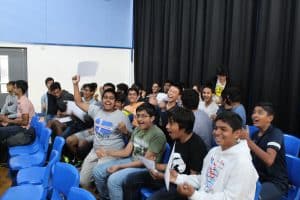 Lending their expertise and experience on the day were four 2017 leavers: Aadil Kara, Neelesh Ravichandran and Harikesan Baskaran and Suchira Peiris. Aadil, Neelesh and Harikesan all got through to the national stages of the UK Space Design Competition (Galactic Challenge’s ‘big brother’ for older pupils) when they were in Year 13, with Aadil going on to reach international level.
Lending their expertise and experience on the day were four 2017 leavers: Aadil Kara, Neelesh Ravichandran and Harikesan Baskaran and Suchira Peiris. Aadil, Neelesh and Harikesan all got through to the national stages of the UK Space Design Competition (Galactic Challenge’s ‘big brother’ for older pupils) when they were in Year 13, with Aadil going on to reach international level.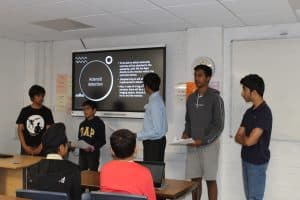 The challenge has two main objectives: to help foster pupils’ interest in Science, Technology, Engineering and Mathematics (STEM), and to help them develop so-called ‘soft skills’, such as team-working, communication, and the ability to solve complex problems.
The challenge has two main objectives: to help foster pupils’ interest in Science, Technology, Engineering and Mathematics (STEM), and to help them develop so-called ‘soft skills’, such as team-working, communication, and the ability to solve complex problems.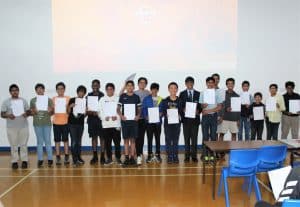 Suchira left QE to read Politics and International Studies at the University of Warwick, before securing a role as a consulting data analyst at the Information Lab. He said: “As a volunteer it was inspiring to see how engaged and active the students were in the competition, the out-of-the-box thinking, novel problem-solving and, in nearly every case, a board-worthy presentation!”
Suchira left QE to read Politics and International Studies at the University of Warwick, before securing a role as a consulting data analyst at the Information Lab. He said: “As a volunteer it was inspiring to see how engaged and active the students were in the competition, the out-of-the-box thinking, novel problem-solving and, in nearly every case, a board-worthy presentation!”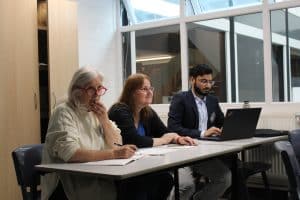 After trailing team Astrodyne Delta through the early stages of the competition, Solaris Flight Systems came through in the final stage to secure victory by the tightest of margins, winning contracts worth £320bn, against Astrodyne Delta’s £315bn. Infinity Airspace were not too far behind, on £300bn, with all three impressing the judges and securing contracts.
After trailing team Astrodyne Delta through the early stages of the competition, Solaris Flight Systems came through in the final stage to secure victory by the tightest of margins, winning contracts worth £320bn, against Astrodyne Delta’s £315bn. Infinity Airspace were not too far behind, on £300bn, with all three impressing the judges and securing contracts.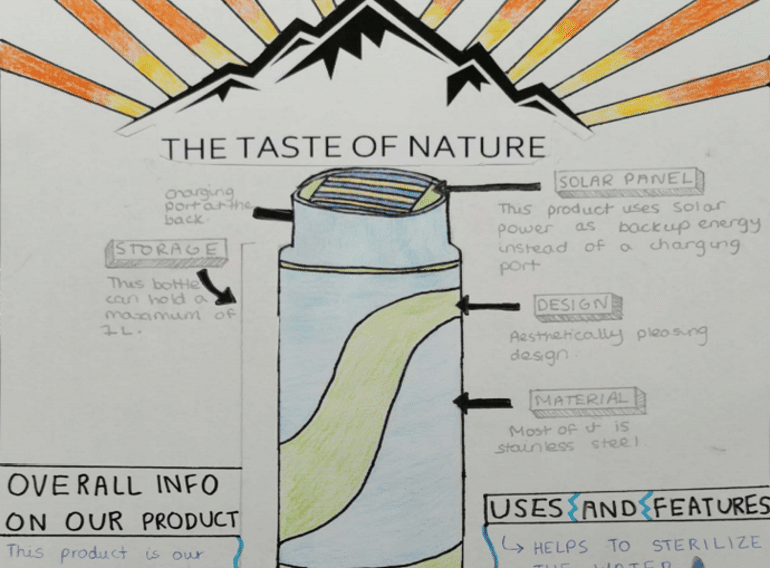
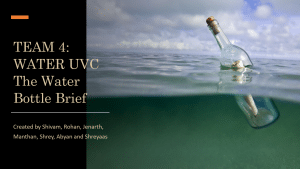 Team 4’s Water UVC bottle could thus benefit many millions across the developing world without access to safe drinking water, the boys explained in their richly illustrated, 31-page PowerPoint presentation. They even included an option for the UV lamp to be solar-powered to make the bottle viable for people who could not afford mains electricity.
Team 4’s Water UVC bottle could thus benefit many millions across the developing world without access to safe drinking water, the boys explained in their richly illustrated, 31-page PowerPoint presentation. They even included an option for the UV lamp to be solar-powered to make the bottle viable for people who could not afford mains electricity.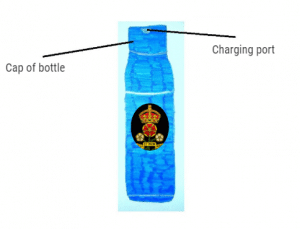 Making the announcement that Team 4 had won, Assistant Head (Pupil Progress) Sarah Westcott said: “During last term’s lockdown, our usual face-to-face careers activities for Year 9 in this important period of their School careers had to be reimagined. We amended our plans so that boys could work from home, while still developing important work-related skills such as creativity, teamwork, independence and the ability to communicate their ideas.”
Making the announcement that Team 4 had won, Assistant Head (Pupil Progress) Sarah Westcott said: “During last term’s lockdown, our usual face-to-face careers activities for Year 9 in this important period of their School careers had to be reimagined. We amended our plans so that boys could work from home, while still developing important work-related skills such as creativity, teamwork, independence and the ability to communicate their ideas.”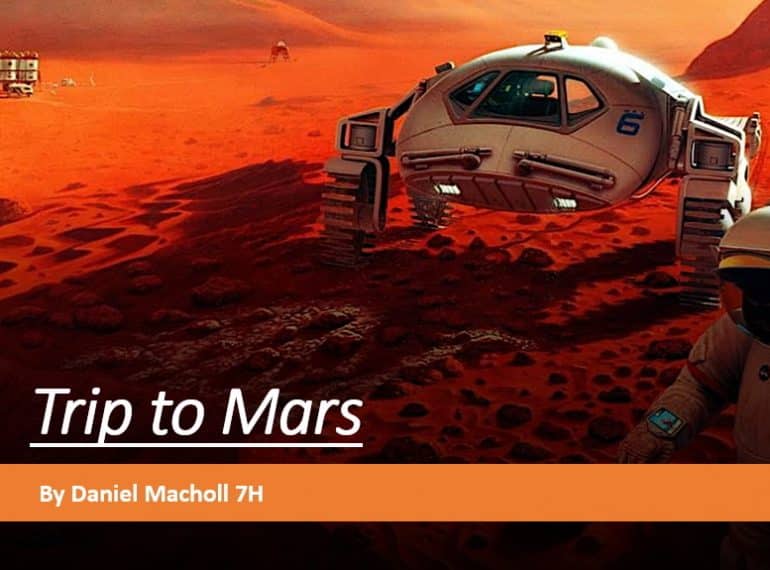
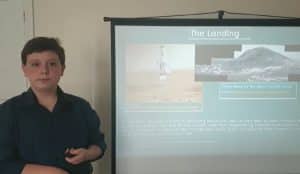 Assistant Head (Pupil Progress) Sarah Westcott paid tribute to the finalists in the Year 7
Assistant Head (Pupil Progress) Sarah Westcott paid tribute to the finalists in the Year 7 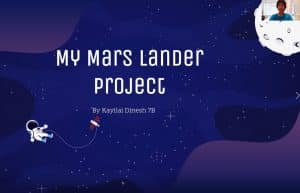 After shortlisting nine pupils to submit a recording of their work
After shortlisting nine pupils to submit a recording of their work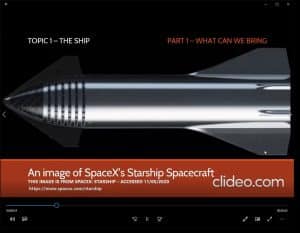 Dr Westcott was also struck by how well the boys
Dr Westcott was also struck by how well the boys 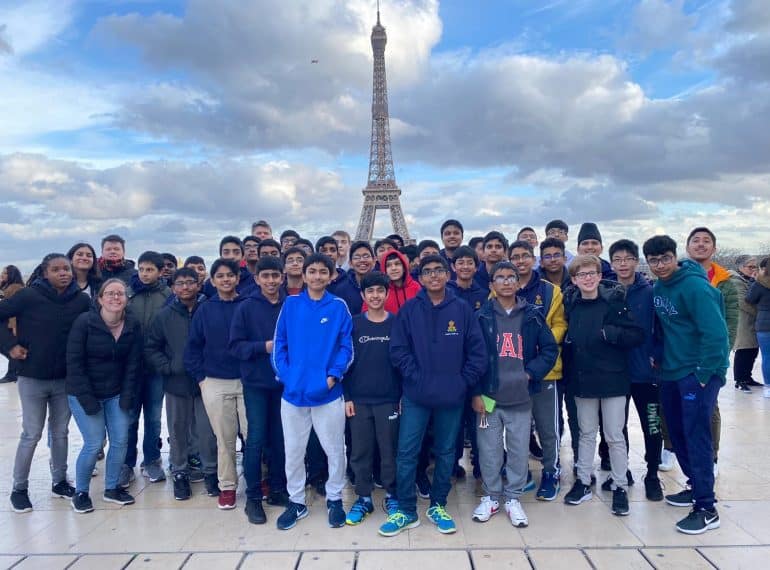
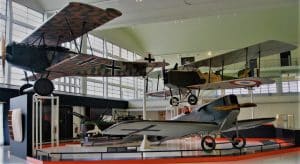 The first stopping-off point for the group was the National Air and Space Museum of France, at Paris’s historic Le Bourget, still a working airport for private flights. With nearly 20,000 exhibits, the museum features two Concordes among its 150 aeroplanes. The boys sampled the flight simulator and learned about the development of flight, from air balloons to the modern day.
The first stopping-off point for the group was the National Air and Space Museum of France, at Paris’s historic Le Bourget, still a working airport for private flights. With nearly 20,000 exhibits, the museum features two Concordes among its 150 aeroplanes. The boys sampled the flight simulator and learned about the development of flight, from air balloons to the modern day. Later, at the Cité des Sciences et de l’Industrie, the biggest science museum in Europe, the group were able to see exhibitions on themes from genetics to energy. “I found the robotics section especially fascinating as visitors could control the robots,” said Aarush. “It linked up really nicely with my personal interests at School, where I’m active with VEX Robotics.”
Later, at the Cité des Sciences et de l’Industrie, the biggest science museum in Europe, the group were able to see exhibitions on themes from genetics to energy. “I found the robotics section especially fascinating as visitors could control the robots,” said Aarush. “It linked up really nicely with my personal interests at School, where I’m active with VEX Robotics.”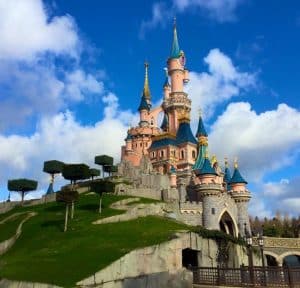 “The boys have been studying energy transfers in Science, and the rides have furnished knowledge which they will now have the opportunity to discuss in the classroom,” said Miss Deakin.
“The boys have been studying energy transfers in Science, and the rides have furnished knowledge which they will now have the opportunity to discuss in the classroom,” said Miss Deakin.
 Aadil Kara (OE 2010–2017), who has just completed the second year of a Physics degree at Imperial College, is currently Chair of the Galactic Challenge (GC) – a regional competition for younger pupils and a sister competition to the UK Space Design Competition (UKSDC). In his final year at QE, Aadil progressed from the UKSDC to the International Space Settlement Design Competition, hosted by NASA’s Kennedy Space Center.
Aadil Kara (OE 2010–2017), who has just completed the second year of a Physics degree at Imperial College, is currently Chair of the Galactic Challenge (GC) – a regional competition for younger pupils and a sister competition to the UK Space Design Competition (UKSDC). In his final year at QE, Aadil progressed from the UKSDC to the International Space Settlement Design Competition, hosted by NASA’s Kennedy Space Center. Helping Aadil and Mr Brooke were Aadil’s QE contemporaries and former UKSDC co-competitors, Neelesh Ravichandran, Harikesan Baskaran and Sam Bayney, as well as David Dubinksy, who attended QE from 2012–2016. Neelesh, Harikesan and Sam all served as Coordinators on the day, while David, who, like Aadil, reached the international stages of UKSDC in his year, was the volunteer CEO for one of the competing teams, or ‘companies’.
Helping Aadil and Mr Brooke were Aadil’s QE contemporaries and former UKSDC co-competitors, Neelesh Ravichandran, Harikesan Baskaran and Sam Bayney, as well as David Dubinksy, who attended QE from 2012–2016. Neelesh, Harikesan and Sam all served as Coordinators on the day, while David, who, like Aadil, reached the international stages of UKSDC in his year, was the volunteer CEO for one of the competing teams, or ‘companies’. Aadil said: “We run GC competitions throughout the country firstly to stimulate students’ interests in STEM from the early ages of secondary education, and secondly to help them develop ‘soft skills’, including team-working and interpersonal skills. Having first participated in the process in the Sixth Form, it was a pleasure to be able to bring the competition back to the School.”
Aadil said: “We run GC competitions throughout the country firstly to stimulate students’ interests in STEM from the early ages of secondary education, and secondly to help them develop ‘soft skills’, including team-working and interpersonal skills. Having first participated in the process in the Sixth Form, it was a pleasure to be able to bring the competition back to the School.”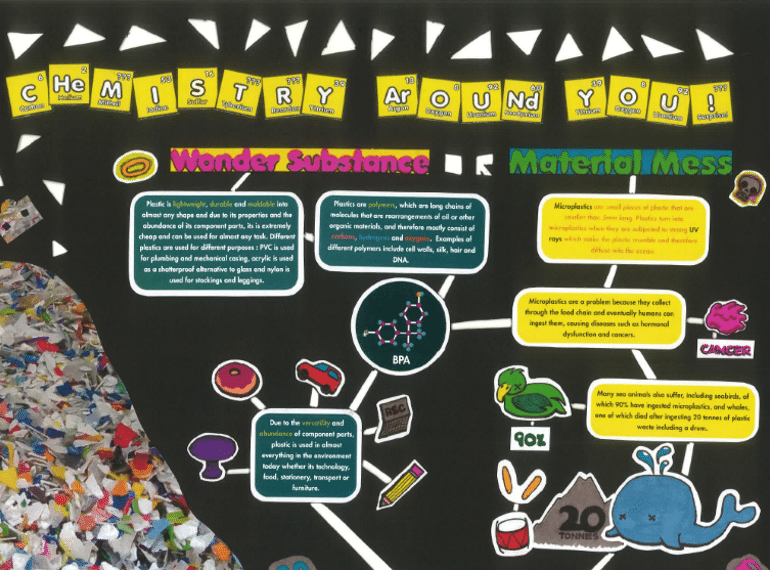
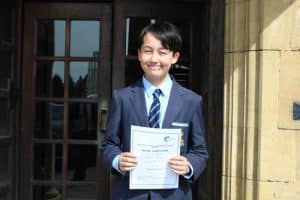 Entrants in the under-13 competition run by the RSC’s Chilterns and Middlesex Division were challenged to prepare a poster under the heading of The Chemistry Around Us.
Entrants in the under-13 competition run by the RSC’s Chilterns and Middlesex Division were challenged to prepare a poster under the heading of The Chemistry Around Us.